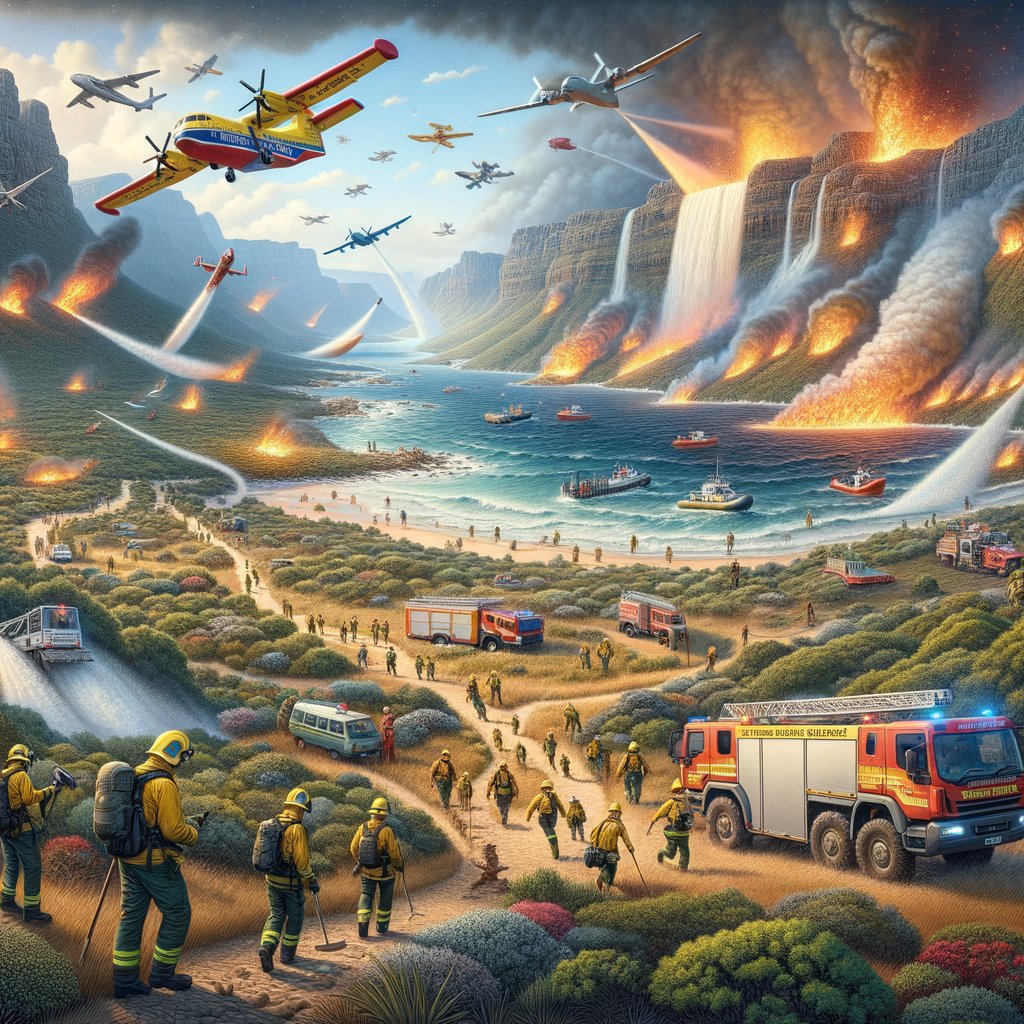Image created by AI
Unrelenting Fires Test the Mettle of Garden Route District Fire & Rescue Services During Holiday Season
Throughout the festive season stretching from December 1, 2024, to January 5, 2025, the Garden Route District Municipality’s (GRDM) Fire & Rescue Services faced severe challenges due to an increase in wildfires. These fires, exacerbated by the dry summer season, threatened not just the vast and varied landscape of the region but also the lives and properties of residents.
Over the holiday period, GRDM answered the call to 17 fire emergencies involving relentless veld and mountain fires across the district, including regions such as Melkhoutfontein, Jongensfontein near Still Bay, and the northern parts of George among others. The teams were confronted with fires spreading across difficult terrains such as the Swartberg Mountains in Oudtshoorn and the coastal dunes in the Hessequa area.
Firefighters tackled these adversities head-on with significant efforts, such as trooping in ground crews who manually traversed the rugged topography, something that proved to be both physically draining and time-consuming. A total of 54 personnel were deployed at the peak of the Swartberg Mountain fires, highlighting the intense human effort required to combat these blazes.
Local assistance was vital as the GRDM team collaborated closely with community members including local farmers, and utilized resources like bulldozers and tractors which played pivotal roles in managing fire breaks—an essential tactic to curb the spread of fires. The local Hessequa Municipality further supported the firefighting efforts with heavy machinery, concentrating on fuel and firebreak management.
From an aerial perspective, the firefighting strategy also saw an intense commitment with a total of 48 hours flown by various firefighting aircraft, including bombers, spotter planes, and helicopters serving as crucial reinforcements in tackling the widespread fires.
The ongoing struggle against wildfires was also marked by innovative approaches such as counter-burning techniques. These measures, aimed primarily at coastal fires, prove to be strategic and effective in controlling, or sometimes completely halting, the progress of wildfires. The employment of heli-tack crews brought an invaluable edge to the rapid suppression of fires particularly in impassable terrains.
One notable challenge that persisted was the activation of aerial resources during multiple simultaneous lighting strikes, a natural phenomenon often occurring just before sundown which could exacerbate fire situations as they intensify during hot and humid evenings. This issue emphasizes the need for improvements in early and precise fire detection and the swift response capabilities of aerial firefighting teams.
Despite these ongoing and evolving challenges, the GRDM Fire & Rescue Services' coordinated and collaborative approach has been instrumental. This proactive engagement not only involves local community and farm owners but extends to partnerships with organizations like Working on Fire, the Fire Protection Association, and trained volunteer groups.
The effective management of the crisis during this period allowed for significant achievements: no lives were lost, and no properties were destroyed, underscoring the effectiveness of the response strategies and the valor of all involved teams.
Looking ahead, GRDM emphasizes the importance of continuous innovation and adaptation in firefighting practices, particularly concerning the management of alien invasive plant species, which fuel wildfires. Additionally, proactive measures like the establishment of comprehensive fire breaks are encouraged to ensure the resilience and safety of vulnerable areas.
For reporting wildfires or emergencies within the district, residents can contact the dedicated helpline at 044 805 5071 or reach out via WhatsApp at 081 709 5193.
